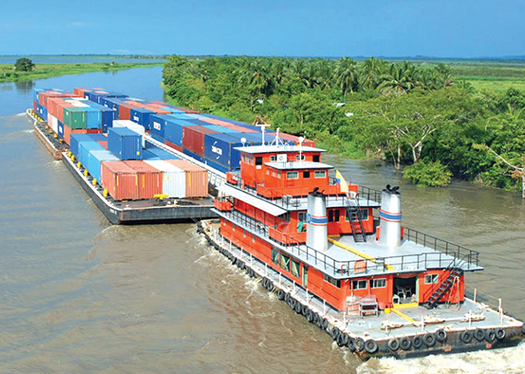
Cargo carried to or from ports upstream of the Paraná River city of Rosario, Argentina, has to be moved by barge due to modest channel depths. (Photo courtesy of Fundación Humedales)
The future of the lower portion of the Paraná, South America’s second-longest river behind the Amazon, has become clouded by an unresolved assortment of economic, political and environmental questions. These revolve around the status of channel-deepening along the Hidrovía, a major South American river-transport route, particularly in the stretch between the grain-processing city of Rosario and the River Plate, gateway to the Atlantic and foreign markets. Plans to expand such work have stirred crosscurrents of debate. On one side are conservationists who fear the Paraná and Paraguay rivers will become an industrial shipping channel, dooming their ecosystems. On the other is export-sector industry led by agribusiness, which aims to make its products more competitive in world markets by cutting shipping costs. The Hidrovía route extends upstream along the Paraná from the River Plate past Rosario to the Paraguay River, the Paraná’s main tributary, then up... [Log in to read more]